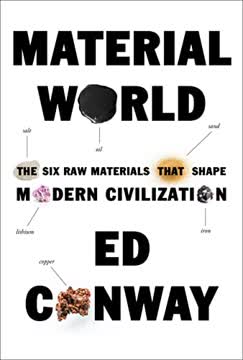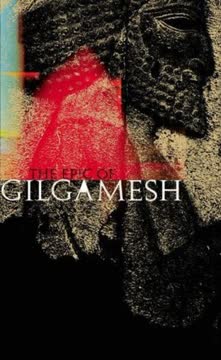نکات کلیدی
1. دیپلماسی از تمرکز بر دولتها به جهانی شدن و بازیگران متنوع تغییر میکند
دیپلماسی به چیزی فراتر از دیپلماسی دولتها و حکومتها تبدیل شده است.
از سنتی به مدرن. دیپلماسی از یک عمل متمرکز بر دولت به یک پدیده جهانی تبدیل شده که شامل بازیگران متنوعی است. در حالی که کنوانسیون وین در سال 1961 درباره روابط دیپلماتیک هنوز بهطور رسمی تنها دیپلماسی دولتی را به رسمیت میشناسد، واقعیت در میدان بسیار پیچیدهتر است.
بازیگران جدید ظهور میکنند. اکنون چشمانداز دیپلماتیک شامل:
- شرکتهای فراملی (TNCs)
- سازمانهای بیندولتی (IGOs)
- سازمانهای غیردولتی (NGOs)
- سازمانهای جامعه مدنی (CSOs)
این نهادها شبکههای دیپلماتیک خود را ایجاد میکنند و در داخل و خارج از کانالهای دیپلماتیک سنتی فعالیت میکنند. ظهور دیپلماسی عمومی که هدف آن تأثیرگذاری بر افکار عمومی خارجی است، مرزهای بین دیپلماسی رسمی و غیررسمی را بیشتر محو میکند.
2. معاهدات روابط بینالمللی را شکل میدهند و چشمانداز دیپلماتیک را تعریف میکنند
اصل این است که معاهدات بهطور معتبر منعقد شده، برای امضاکنندگان الزامآور هستند و آنها باید بهطور نیکخواهانه به آنها پایبند باشند، یک قاعده اساسی در حقوق بینالملل است.
سنگ بنای دیپلماسی. معاهدات بهعنوان پایهگذار روابط بینالمللی مدرن عمل میکنند و چارچوبی رسمی برای توافقات بین کشورها فراهم میآورند. آنها طیف وسیعی از مسائل را پوشش میدهند، از صلح و امنیت تا تجارت و حفاظت از محیط زیست.
جنبههای کلیدی معاهدات:
- نیاز به مجوز مناسب و آزادی عمل از سوی امضاکنندگان
- میتوانند چندجانبه (شامل چندین طرف) یا دوجانبه (بین دو طرف) باشند
- ممکن است شامل بندهایی مانند وضعیت "ملت مورد علاقه" در توافقات تجاری باشند
- میتوانند تحت شرایط خاصی، مانند تغییرات مادی در شرایط، خاتمه یابند
کنوانسیون وین در مورد حقوق معاهدات (1969) حقوق بینالملل حاکم بر معاهدات را codified کرده و رویکردی استاندارد برای ایجاد، تفسیر و خاتمه آنها فراهم میآورد.
3. ریشههای جنگ جهانی اول در دیپلماسی اتحاد و نظامیسازی نهفته است
این اتحادهای درهمتنیده بودند که خانهی کارتی را ایجاد کردند که وقتی جنگ آغاز شد، یا به عبارت دیگر وقتی امپراتوری روسیه اعلام بسیج ارتشهایش را کرد، فرو ریخت و قدرتهای بزرگ – به جز ایتالیا که برای بالاترین پیشنهاد مقاومت کرد – به جنگ رفتند.
سیستم اتحاد به ضرر خود عمل میکند. شبکه پیچیدهای از اتحادها در اروپا قبل از جنگ جهانی اول، که به منظور حفظ تعادل و جلوگیری از درگیری ایجاد شده بود، در نهایت به تشدید سریع جنگ کمک کرد. وقتی بحران به وقوع پیوست، این توافقات کشورها را به یک درگیری وسیعتر کشاند.
نظامیسازی تنشها را تشدید میکند:
- طرح شلیفِن آلمان، که برای پیروزی سریع طراحی شده بود، نیاز به حمله به بلژیک بیطرف داشت
- مسابقه تسلیحاتی بین قدرتهای بزرگ آمادگی نظامی و تنشها را افزایش داد
- باور به اجتنابناپذیری جنگ منجر به برنامهریزی نظامی تهاجمی شد
ترور آرشیدوک فرانز فردیناند در سارایوو جرقهای بود که این تنشهای نهفته را شعلهور کرد و به یک درگیری جهانی منجر شد که نظم بینالمللی را دگرگون کرد.
4. اقدامات تنبیهی معاهده ورسای بذرهای درگیریهای آینده را کاشت
کینز به آنها درباره گرفتن سرزمین از آلمان هشدار داده بود، در حالی که خواستار غرامت برای هزینههای جنگ بود. آیا درست بود که چنین سختیهایی را بر کشوری که قبلاً از جنگ ویران شده بود، تحمیل کنند؟
شرایط سخت صلح. معاهده ورسای، که جنگ جهانی اول را به پایان رساند، مجازاتهای شدیدی را بر آلمان تحمیل کرد:
- از دست دادن سرزمین
- محدودیتهای نظامی
- پرداختهای غرامت کلان
- بند "گناه جنگ" که مسئولیت کامل درگیری را به آلمان نسبت میدهد
عواقب ناخواسته. این اقدامات تنبیهی، در حالی که خواستههای متفقین برای انتقام را برآورده میکرد، مشکلات بلندمدتی را ایجاد کرد:
- سختیهای اقتصادی در آلمان باعث ایجاد نارضایتی و بیثباتی سیاسی شد
- از دست دادن سرزمین و افتخار ملی به ظهور ایدئولوژیهای افراطی کمک کرد
- تضعیف آلمان تعادل قدرت در اروپا را مختل کرد
منتقدانی مانند اقتصاددان جان مینارد کینز استدلال کردند که سختگیری معاهده منجر به رکود اقتصادی و درگیریهای آینده خواهد شد. این پیشبینیها به طرز غمانگیزی درست از آب درآمدند، زیرا میراث این معاهده به شرایطی که منجر به جنگ جهانی دوم شد، کمک کرد.
5. توافق درصد چرچیل-استالین اروپا پس از جنگ جهانی دوم را شکل داد
«بگذارید درباره امورمان در بالکان توافق کنیم.» بهطور خاص، او ادامه داد: «ما منافع، مأموریتها و نمایندگانی در آنجا داریم. نگذارید در جزئیات با هم دچار سوءتفاهم شویم. تا جایی که به بریتانیا و روسیه مربوط میشود، چطور است که شما نود درصد تسلط در رومانی داشته باشید، ما نود درصد حق رأی در یونان داشته باشیم و درباره یوگسلاوی به صورت پنجاه-پنجاه تقسیم کنیم؟»
توافقهای پشت پرده. در اکتبر 1944، وینستون چرچیل، نخستوزیر بریتانیا و ژوزف استالین، رهبر شوروی، بهطور مخفیانه برای بحث درباره حوزههای نفوذ در اروپای شرقی پس از جنگ ملاقات کردند. این "توافق درصدی" غیررسمی بهدنبال تقسیم کنترل بر کشورهای مختلف بین متفقین غربی و اتحاد جماهیر شوروی بود.
پیامدهای این توافق:
- تلاش برای جلوگیری از درگیریها بین قدرتهای متفق در منطقه
- به رسمیت شناختن واقعیت تسلط نظامی شوروی در بخشهای زیادی از اروپای شرقی
- حذف ایالات متحده از دخالت مستقیم در این تصمیمات
- پیشبینی تقسیم اروپا در دوران جنگ سرد به حوزههای غربی و شوروی
اگرچه این توافق یک معاهده رسمی نبود، اما بر سیاستهای پس از جنگ تأثیر گذاشت و به تنشهایی که دوران جنگ سرد را تعریف میکرد، کمک کرد. همچنین رویکرد عملی و مبتنی بر قدرت دیپلماسی را که رهبرانی مانند چرچیل و استالین به کار میبردند، نشان داد.
6. معاهده ANZUS نمونهای از تلاش قدرتهای کوچک برای ایجاد اتحادهای امنیتی است
بهسادگی، کانبرا به دنبال اطمینان استراتژیک بود که آمریکا در زمانهای دشوار به استرالیا کمک خواهد کرد؛ واشنگتن به همکاری و فرصتی برای بهرهبرداری از موقعیت جغرافیایی منحصر به فرد استرالیا در اقیانوس آرام غربی و همچنین موقعیت سیاسی کلی در جنوب شرق آسیا نیاز داشت.
اتحاد نامتقارن. معاهده ANZUS، که در سال 1951 بین استرالیا، نیوزیلند و ایالات متحده امضا شد، نشاندهنده این است که چگونه قدرتهای کوچک به دنبال تضمینهای امنیتی از متحدان بزرگتر هستند. استرالیا بهویژه این اتحاد را برای اطمینان از حفاظت آمریکایی در برابر تهدیدات بالقوه در منطقه آسیا-پاسیفیک دنبال کرد.
جنبههای کلیدی ANZUS:
- فراهم آوردن یک پیوند امنیتی رسمی برای استرالیا با ایالات متحده
- ارائه منافع استراتژیک برای ایالات متحده در اقیانوس آرام غربی
- بازتاب نگرانیهای جنگ سرد درباره گسترش کمونیسم
- نشاندهنده چالشهای تعادل منافع ملی در یک اتحاد
مذاکره و اجرای این معاهده پیچیدگیهای دیپلماسی بین کشورهایی با اندازهها و قابلیتهای بسیار متفاوت را نمایان کرد. در حالی که استرالیا به دنبال تعهدات قوی بود، ایالات متحده به دنبال انعطافپذیری و نفوذ منطقهای وسیعتر بود.
7. جهانیسازی دیپلماسی را متحول میکند و چالشها و بازیگران جدیدی را معرفی میکند
ویژگی بارز جهانیسازی در قرن بیست و یکم، پیچیدگی فزاینده روابط جهانی و سرعتی است که اطلاعات در سراسر جهان جابجا میشود و راههای جدیدی برای انجام دیپلماسی باز میکند و به شرکتکنندگان جدیدی اجازه میدهد تا در این عرصه وارد شوند.
جهان به هم پیوسته. جهانیسازی بهطور بنیادی عمل دیپلماسی را با ایجاد یک محیط بینالمللی پیچیده، به هم پیوسته و به سرعت در حال تغییر دگرگون کرده است. این چشمانداز جدید چالشها و فرصتهایی را برای بازیگران دیپلماتیک به همراه دارد.
ویژگیهای کلیدی دیپلماسی جهانیشده:
- افزایش نقش بازیگران غیردولتی (NGOs، شرکتها، گروههای جامعه مدنی)
- ظهور تهدیدات امنیتی "چندشکلی" (مانند تغییرات اقلیمی، تروریسم، پاندمیها)
- اهمیت فزاینده دیپلماسی اقتصادی و نهادهای حکمرانی جهانی
- نیاز به پاسخ سریع به بحرانها و جابجایی اطلاعات
- ظهور سازمانهای منطقهای بهعنوان بازیگران دیپلماتیک
دیپلماتها اکنون باید در یک سیستم چندلایه از منافع جهانی، منطقهای و محلی حرکت کنند و اغلب به مسائلی بپردازند که فراتر از مرزهای سنتی دولتی است. این نیازمند مهارتهای جدید، سازگاری و درک وسیعتری از چالشهای جهانی متنوع است.
آخرین بهروزرسانی::
FAQ
What's "Diplomacy: A Very Short Introduction" about?
- Historical Perspective: The book provides an introduction to the subject and study of diplomacy from a historical perspective, illustrating the art of diplomacy in action through significant historical phases and episodes.
- Evolution of Diplomacy: It traces the evolution of diplomacy from its primitive origins in the Bronze Age to its modern form, highlighting key changes in methods and practices over time.
- Case Studies: The book uses case studies to demonstrate the varying demands on diplomats and the impact of diplomacy on statecraft and international relations.
- Key Themes: It explores themes such as treaty-making, the diplomacy of the American Revolution, the origins of the Great War, and the diplomacy in the age of globalization.
Why should I read "Diplomacy: A Very Short Introduction"?
- Comprehensive Overview: The book offers a concise yet comprehensive overview of the history and practice of diplomacy, making it accessible to general readers.
- Insightful Analysis: It provides insightful analysis of how diplomacy has shaped major historical events and the global world we live in today.
- Educational Value: Readers can gain a deeper understanding of the complexities and nuances of diplomatic practices and their significance in international relations.
- Engaging Case Studies: The use of engaging historical case studies helps to illustrate the practical application and evolution of diplomatic strategies.
What are the key takeaways of "Diplomacy: A Very Short Introduction"?
- Diplomacy's Evolution: Diplomacy has evolved significantly from its early forms, adapting to changes in communication, technology, and international relations.
- Role of Negotiations: Negotiations are a universal aspect of diplomacy, aiming to achieve agreements that are better than the fundamental positions of the parties involved.
- Impact on Statecraft: Skilful diplomacy is crucial for political success and can have profound ramifications for the fate of nations.
- Globalization's Influence: The age of globalization has expanded the scope of diplomacy beyond states to include transnational corporations, intergovernmental organizations, and civil society organizations.
How does Joseph M. Siracusa define diplomacy in the book?
- Historical Definition: Diplomacy is defined as the management of relations between independent states through negotiations, as well as the art of saying the right things at the right time.
- Evolutionary Perspective: The book emphasizes the evolution of diplomacy, highlighting how it has adapted to different historical contexts and challenges.
- Universal Role: Diplomacy is portrayed as a universal practice that involves negotiations aimed at achieving agreements that are better than the fundamental positions of the parties involved.
- Modern Context: In the age of globalization, diplomacy extends beyond state actors to include various non-state entities, reflecting the complexity of modern international relations.
What are the best quotes from "Diplomacy: A Very Short Introduction" and what do they mean?
- "Diplomacy has been around a very long time." This quote underscores the ancient origins of diplomacy and its enduring relevance throughout history.
- "The art of saying nice 'doggie' until you can find a rock." This humorous definition highlights the strategic and sometimes deceptive nature of diplomatic negotiations.
- "Diplomacy was and is an important element of statecraft." This emphasizes the critical role of diplomacy in achieving political success and shaping international relations.
- "The story of diplomacy also reads as a cautionary tale." This suggests that while diplomacy can lead to positive outcomes, it can also result in unintended consequences and failures.
How does the book explore the evolution of diplomacy?
- Historical Origins: The book traces the origins of diplomacy back to the Bronze Age, highlighting early forms of diplomatic communication and negotiation.
- Key Developments: It examines key developments in diplomatic practices, such as the establishment of foreign ministries and the role of ambassadors.
- Modern Adaptations: The book discusses how diplomacy has adapted to modern challenges, including the impact of globalization and technological advancements.
- Case Studies: Through case studies, the book illustrates how diplomatic methods have evolved in response to changing historical contexts and international dynamics.
What role did diplomacy play in the American Revolution according to the book?
- Quest for Foreign Aid: Diplomacy was crucial in securing foreign aid from European powers, particularly France, which was essential for the colonies' military success.
- French Alliance: The book details the diplomatic efforts that led to the Treaty of Amity and Commerce and the Treaty of Alliance with France, which provided vital support to the American cause.
- Negotiation of Peace: Diplomats like Benjamin Franklin played key roles in negotiating peace with Great Britain, resulting in the Treaty of Paris and the recognition of American independence.
- Strategic Realism: The book highlights the strategic realism of American diplomats, who prioritized power and practical considerations over ideology in their negotiations.
How does the book address the diplomatic origins of the Great War?
- Alliance Diplomacy: The book explores the complex web of alliances and rivalries that contributed to the outbreak of World War I, including the entangling alliances between major powers.
- German Militarization: It discusses the militarization of German diplomacy and the influence of the German officer corps on foreign policy decisions.
- Franco-German Enmity: The book examines the historical enmity between France and Germany, which played a significant role in the lead-up to the war.
- Diplomatic Failures: The book highlights the diplomatic failures and miscalculations that led to the escalation of tensions and the eventual outbreak of war.
What insights does the book provide on the night Stalin and Churchill divided Europe?
- Balkan Spheres of Influence: The book details the secret agreement between Churchill and Stalin to divide the Balkans into spheres of influence, reflecting the realpolitik of the time.
- Personal Diplomacy: It emphasizes the role of personal diplomacy and the informal nature of the agreement, which was made with a simple exchange of percentages on a piece of paper.
- Impact on Postwar Europe: The agreement had significant implications for the postwar order in Europe, influencing the division of territories and the balance of power.
- American Involvement: The book discusses the limited involvement of the United States in the agreement and the subsequent tensions between the Allies over the division of Europe.
How does the book describe the ANZUS Treaty and its significance?
- Cold War Context: The book places the ANZUS Treaty within the context of the Cold War, highlighting the strategic interests of Australia, New Zealand, and the United States.
- Bipartisan Determination: It emphasizes the bipartisan determination of Australian leaders to secure a binding security relationship with the United States.
- Negotiation Challenges: The book details the challenges and negotiations involved in establishing the treaty, including the differing priorities of the involved parties.
- Strategic Reassurance: The ANZUS Treaty provided strategic reassurance to Australia and New Zealand, ensuring American support in the event of regional conflicts.
What does the book say about diplomacy in the age of globalization?
- Expanded Scope: The book discusses how globalization has expanded the scope of diplomacy beyond states to include transnational corporations, intergovernmental organizations, and civil society organizations.
- Complex Crises: It highlights the complexity of modern global relations and the interconnected nature of security issues, which require coordinated diplomatic efforts.
- Public Diplomacy: The book explores the role of public diplomacy in shaping international relations and influencing public attitudes towards foreign policy.
- Challenges and Opportunities: Globalization presents both challenges and opportunities for diplomacy, requiring adaptation to new actors and issues in the international arena.
How does the book address the role of non-state actors in modern diplomacy?
- Civil Society Organizations: The book highlights the increasing influence of civil society organizations in global diplomacy, particularly in areas like humanitarian aid and advocacy.
- Transnational Corporations: It discusses the role of transnational corporations in shaping economic diplomacy and their impact on global trade and investment.
- Intergovernmental Organizations: The book examines the diplomatic functions of intergovernmental organizations like the World Trade Organization in facilitating international cooperation.
- Complex Networks: Modern diplomacy involves complex networks of state and non-state actors, requiring new approaches to negotiation and conflict resolution.
نقد و بررسی
کتاب دیپلماسی نقدهای متفاوتی دریافت کرده است و بهطور میانگین امتیاز 3.15 از 5 را کسب کرده است. برخی از خوانندگان آن را آموزنده و خوشنوشته دانستهاند و از مثالهای تاریخی و قالب مختصر آن قدردانی کردهاند. با این حال، بسیاری احساس کردهاند که در توضیح تاکتیکها و نظریههای دیپلماتیک عمق کافی ندارد و بیشتر بر رویدادهای تاریخی تمرکز دارد تا خود عمل دیپلماسی. منتقدان به دیدگاه یورو-مرکزی و اتکای بیش از حد به نقلقولها اشاره کردهاند. در حالی که برخی دسترسیپذیری آن را ستودهاند، دیگران آن را خشک و بیارتباط یافتهاند. پوشش کتاب از دیپلماسی قرن بیستم و جهانیسازی هم تحسین و هم انتقاد دریافت کرده است.
Very Short Introductions Series Series
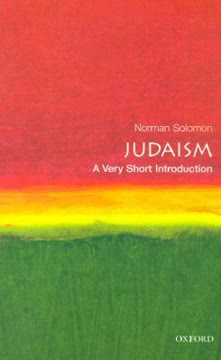
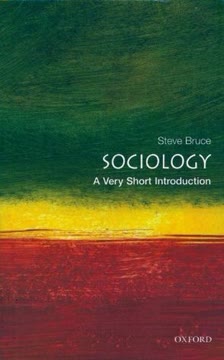
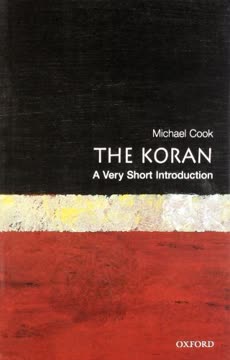
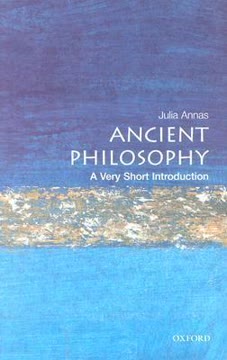
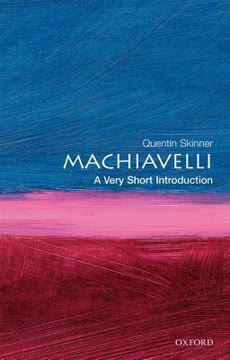
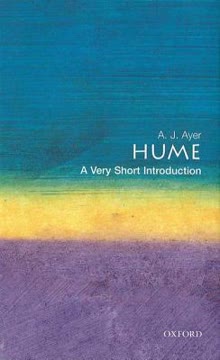
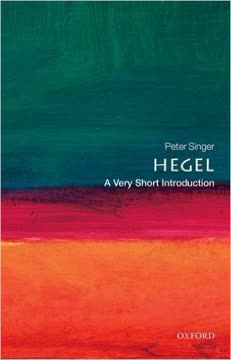
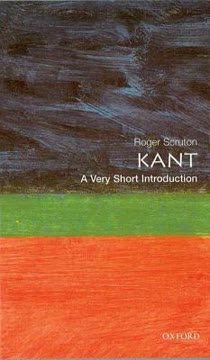
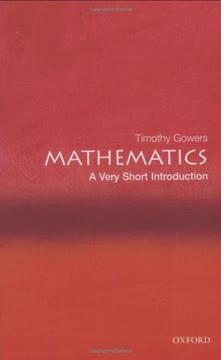
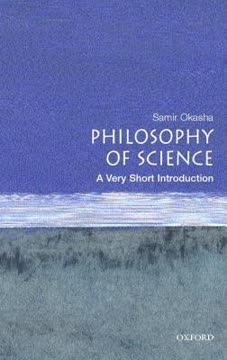
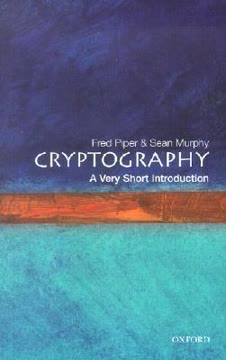
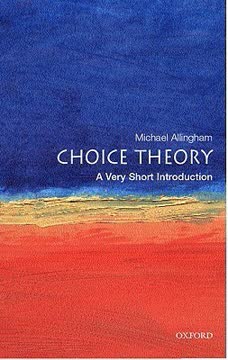
Similar Books
